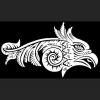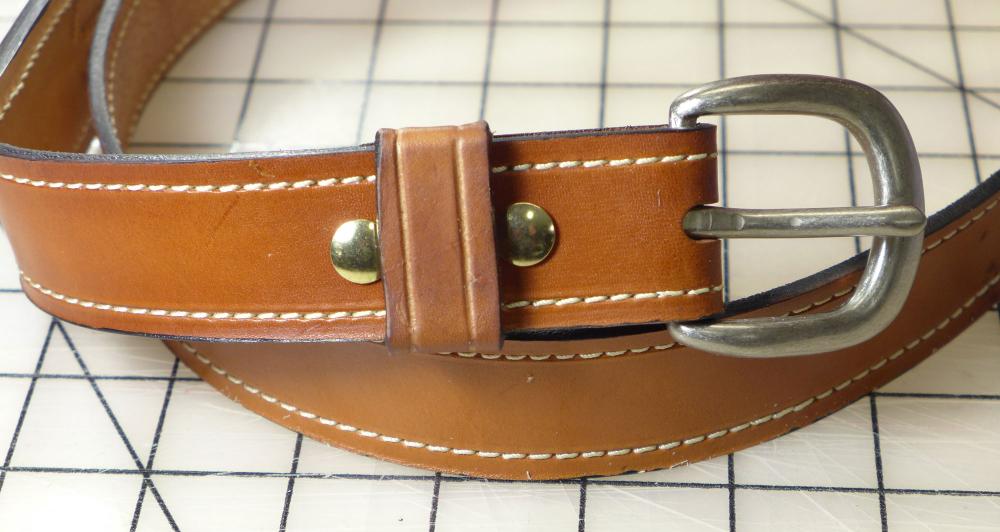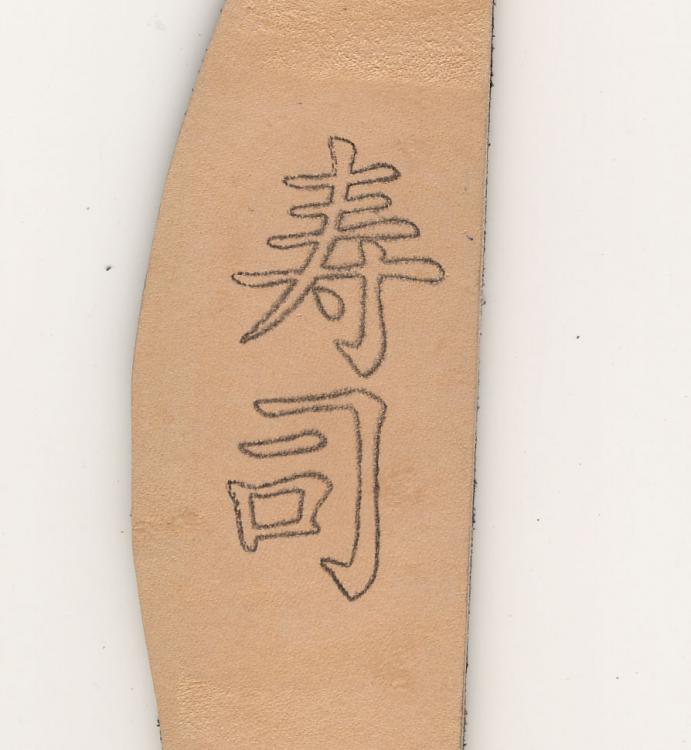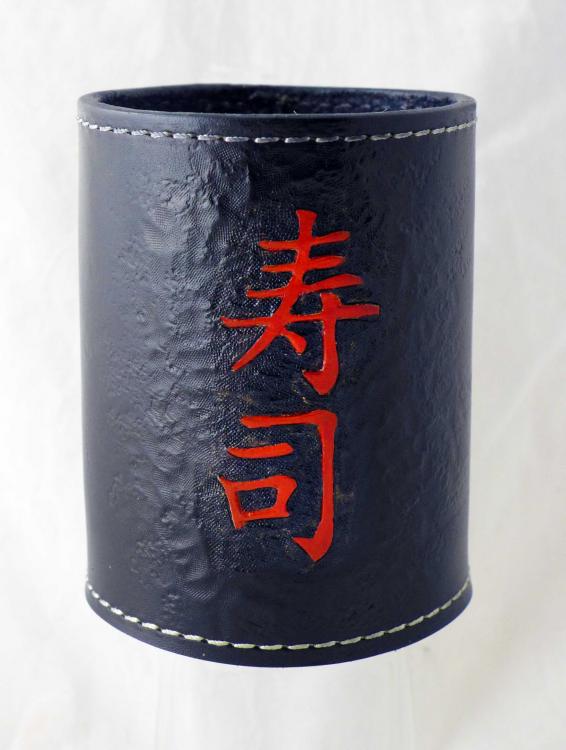-
Posts
961 -
Joined
-
Last visited
Content Type
Profiles
Forums
Events
Blogs
Gallery
Everything posted by BDAZ
-

Durability of sewing veg tan to other leathers
BDAZ replied to benlilly1's topic in How Do I Do That?
I make a pocket holster that uses a heavy piece of skirting for the back and then stitch a 3 oz milled veg tanned to the front, which is wet formed. Milled veg tanned is similar in pliancy to garment. Never had any issues and these holsters spend their life in sweaty pockets with a chunk of steel and plastic bouncing around. Never had a failure, but make sure you have the tension set properly so the loop is in the center. Bob -
Great move.I assume you don't miss Chicago winters!! I may take you up on that beer! BTW I used to play traditional Irish music at the Abbey Tavern, Chief O'Neill's, Irish Fest in Milwaukee and many other places in Chicagoland. The band wanted me to move and I told them I wouldn't be able to handle the winters. Again, thanks for the great videos. Bob
- 55 replies
-
Are you in Greece working with the refugees, retired or working? I used to spend time in Greece when I was a kid. Loved it! Definitely in my immediate future. If you want to PM me... Bob
- 55 replies
-
I used to use a sprayer with a drop of dishwashing detergent in distilled water for carving. It's been a while as these days I only case for stamping and embossing of production work. A problem this time of year is the 5% humidity in the workshop. I use a piece of cellulose sponge and then keep everything covered with plastic till ready to go. Wet forming usually takes a couple of hours in the mid day sun. Thanks for a very interesting and well produced video. Bob
- 55 replies
-
I took a close look at your work and the problem is simple...sharks don't live in Alberta! Actually it looks like you have a layer of something preventing the dye from penetrating the surface. The acrylic paint is more adhesive but you may find it also chips or peels off. This week I had a wholesale order for 24 cases in brown, black, russet and natural. I always use drum dyed Wicket and Craig drum dyed veg tanned for colors and whatever I have lying around for the natural. I was edge coating the 24th item, a natural, and it dripped ..waaaa. I decided to try to dye the case black with USMC. It had no treatment other than having been cased, stamped then dried and wet formed and dried again. I slathered on the USMC using a wool dauber so it thoroughly soaked in and let it dry. I then gave it a second coat and let it dry thoroughly in the AZ sun (5% humidity and 103F). I then buffed off the excess dye, making sure there was sold black below the excess. I then sponged on 50% resolene, which was absorbed into the dyed layer, dried again and the result was perfect. Better in fact, than the drum dyed. Last coat was a Feibings spray wax. Took less than 1/2 hour, plus dry time, to save the case and keep the customer happy. He sells more blacks than natural. I have also noticed that different hides from Tandy take dyes differently. I have learned that it doesn't pay to use crappy materials. Only cheapskates can afford to make things twice. Bob
- 22 replies
-
- black dye
- black antique
-
(and 1 more)
Tagged with:
-
After playing with Photoshop and superimposing one image over the other it appears the buckle frame itself is the same size as the Tandy buckle but the prong seems to be smaller and narrower. The Chicago screws are a #6 punch but that is definitely too big for the prong.. I'm thinking I'll just have to wing it. Actually the press has the included steel plate I use under the granite. I have switched to quartz for my next project. Tighter grain and less prone to shattering and cracking. Thanks! Bob
-
I haven't tried his buckle, I winged it with the oblong punch. Bob
-
I was in the middle of a large project that required a lot of embossing using my 6 ton press. The piece of granite I use as a stage shattered after one overly enthusiastic pull. There is a granite kitchen place a few miles from the shop so I headed over and explained my situation to one of the managers. He took me over to their scrap box and let me take whatever I wanted. I found a few perfect pieces of granite as well as a few quartz, which is even better. I asked him if I could make something for him from leather and he showed me his belt. It was about torn through from where he clips on his tape. I told him I would be happy to make a new belt, using the same hardware and I would reinforce the area where his tape clips on. I had some usable leather and wanted to make a usable belt with minimum effort. I am sure he will be thrilled. I took a picture of the back of the buckle are and took measurements but I have no idea what size to punch the holes. I found a Tandy buckle to have a look at the final belt but the 2mm holes I punched are too small for this buckle. I have to deliver the belt tomorrow and don't want to show up with a hand punch if they are too small. I also don't want them too big either. Based on the pictures, any suggestions about the best guess at hole sizes for the buckle? I don't make belts and this is probably the first one I have made in years! Thanks! Bob
-
Was a similar case in a local (Tucson) music store from years ago. While it is an accomplishment and and amazing amount of skill involved, it's basically useless and the heaviest case I ever lifted. In addition, if it was offered at a fair price, it would cost more than all but the most expensive instruments. It may have a home at the Musical Instruments Museum in Phoenix. They have a copy of Elvis' leather tooled guitar.
-

Switching to W&C Harness Leather - Stamping?
BDAZ replied to RecoveringA55hole's topic in How Do I Do That?
Let us know what works best. Bob -
No benzine in leather dyes. Only spirits including ethanol and isopropyl alcohol. As for other spirits: .
- 24 replies
-
- youcantresistthis
- frisket
-
(and 1 more)
Tagged with:
-

Tinkering To Save Cash...aka....keeping The Tool Budget Down
BDAZ replied to TinkerTailor's topic in How Do I Do That?
I'm afraid I ascribe to the "Time is money" school of leatherwork. To that end I only purchase top quality drum dyed leathers, the best machinery and tools I can afford, and disposable blades wherever possible. Obviously different for hobbyists where you can sell your time for a few bucks an hour. My challenge is to make lined, wet formed and stitched cases in batches of 25 that are priced wholesale and that my customer and I can make a profit on a good quality product. Of course, there are times when one does feel ripped off. Like "acrylic leather paints" than can be purchased at $.50 a bottle at a hobby shop. I like the gum tragacanth tip and purchase some tools at Harbor Freight, when quality is not mission critical. Another factor is that investments in quality tools and materials are written off at tax time. Bob -
Check out this thread. Best thing since sliced bread! You can bay small rolls at Walmart and larger ones through Amazon. Of course it doesn't have to be wet formed but wet forming after bonding has no effect on the bond.
-
Only the pretty ones...
-
I also have a 16 x 20 press and do the same, but didn't mention it because it requires a 16 x 20 press! I don't use the final setting step because I am concerned about cooing the leather. Off topic, but have you tried HeatnnBond for attaching linings? I have attached a transfer to veg tan made with acetone. That was a test for the cup mades for a sushi bar. Bob
-
Absolutely! It's called acetone and I use it all the time to transfer designs for carving. Reverse the image you intend to transfer and print on standard laser paper or try tracing paper. Tape the paper to the leather and then saturate the paper using acetone and a wool dauber. Next use a bone or other type of creaser and rub the toner into the leather. Carefully remove the paper and presto! Bob
-
I find rotary knives remarkable. My last project was hanging decorated strips of bison in a hipster bar (1 1/2 sides) and all done with a rotary 60mm blade. I buy my blades at Michaels or JoAnn's when they have 50% coupons. I also have a sharpener which does a good job and of course I strop regularly. I can also use the rotary for trimming the edges of 2 pieces of 5-6oz plus lining glued together. It gives me a super clean cut and I can shave off 1mm if necessary. Use on of the Tandy leather shears for the close quarter cutting. Bob
-
I have a patent on a soy based, biodegradable paint strippers and ingredients. I checked the safety data of a lot of the acrylic finishes and to my surprise they all contain NMP. Studies in humans show comparable results. Dermal penetration through human skin has been shown to be very rapid. NMP is rapidly biotransformed by hydroxylation to 5-hydroxy-N-methyl-2-pyrrolidone, which is further oxidized to N-methylsuccinimide; this intermediate is further hydroxylated to 2-hydroxy-N-methylsuccinimide. These metabolites are all colourless. The excreted amounts of NMP metabolites in the urine after inhalation or oral intake represented about 100% and 65% of the administered doses, respectively. NMP has a low potential for skin irritation and a moderate potential for eye irritation in rabbits. Repeated daily doses of 450 mg/kg body weight administered to the skin caused painful and severe haemorrhage and eschar formation in rabbits. These adverse effects have not been seen in workers occupationally exposed to pure NMP, but they have been observed after dermal exposure to NMP used in cleaning processes. I used NMP is some of my formulas for soy based paint strippers in the late 90s but later had to find a substitute because it is banned in the EU. It is water soluble and works well with acrylic polymers so be careful and use gloves and a mask. In addition, many of the lacquer sprays were not acrylic and were petro-chemical based. So if it doesn't say acrylic, it probably isn't. I find I get a luster, not a gloss, using resolene cut 50% with distilled water on vegtan with either a light neetsfoot oiling and left to saturate for a few hours in the Arizona sun, or overnight, or on untreated leather. I use one stroke with a damp sponge and the resolene is partially absorbed in the surface, preventing cracking and producing a natural luster. There is no NMP in resolene. Bob
-

Switching to W&C Harness Leather - Stamping?
BDAZ replied to RecoveringA55hole's topic in How Do I Do That?
I use W&C skirting exclusively for my commercial work where time is money. Also consistency on reorders is important They will split skirting to your requirements and their service is first rate! You can request a swatch set and test your stamp on the various leathers to confirm viability. Bob -
Is that ancient Greek on the holster? Bob
- 24 replies
-
- youcantresistthis
- frisket
-
(and 1 more)
Tagged with:
-

Needle Size, Thread, Spi And Leather Weight Rule Of Thumb?
BDAZ replied to Bluesman's topic in Leather Sewing Machines
It will never be as slow as a 3200. I have mine set up to stitch as slow as one stitch every 4 seconds, but there is an inexpensive walking foot and leather needles available and I think it will give you good results on thin leather.The price is <$99. Bob -

Needle Size, Thread, Spi And Leather Weight Rule Of Thumb?
BDAZ replied to Bluesman's topic in Leather Sewing Machines
I have a 3200 which I love but use Singer Heavy Duty for thin leathers : I have used on up to 5-6 oz leather. Bob -
Both embossing plates and dies. A poor man's clicker press. I also have a 2 ton arbor for smaller jobs. Bob
-
I go to my local granite countertop folks. I asked the owner if I could have any scrap, and he walked me over to a bin and said help yourself. I asked him if he's like a new belt..and now I get all mt scraps cut to size. I go through granite which I use for my 12 ton press and the scrap pieces occasionally shatter if I am a bit to enthusiastic. Bob
-
Every product I make requires trimming lining. In my case usually leather or suede but sometimes 3-4 oz veg tan. The tool I find INDISPENSABLE is a 60mm rotary cutter. It's easy to use the narrower leather to track the cutter and the results are usually perfect. There are blade sharpeners which work to some degree. I strop the blade once it starts to dull . Bob






